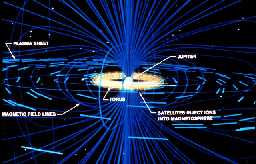This is a drawing of Jupiter and its magnetosphere showing the magnetic field lines, the Io torus, and the plasmasheet (part of the plasmasphere)
Click on image for full size
JPL
Torus
A satellite which has an atmosphere, such as Jupiter's moon Io, or even one with an icy surface which is exposed to energetic particles, such as Saturn's moon Rhea, will leave a cloud of particles behind as it orbits the planet. This cloud of particles is called a torus.
The torus is shown in yellow in this picture.
Eventually all the particles in the cloud will be turned to ions. The presence of ions cause a number of noticable effects in a magnetosphere:
You might also be interested in:
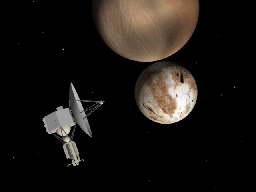
AU stands for Astronomical Units. It is a useful way to measure the distances in interplanetary space. It is the distance between the Earth and the Sun, which is about 93 million miles. For reference,
...more
The solar wind is formed as the Sun's top layer blows off into space, carrying magnetic fields still attached to the Sun. Gusts form in the solar wind associated with violent events on the Sun. Particles
...more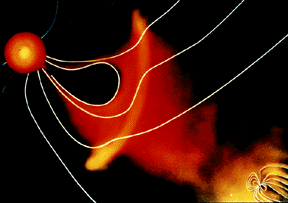
For a planet to be affected by a blob of material being ejected by the sun, the planet must be in the path of the blob, as shown in this picture. The Earth and its magnetosphere are shown in the bottom
...more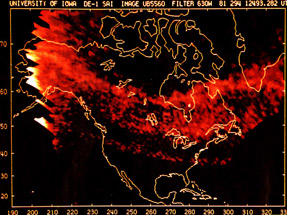
The aurora we are most familiar with is the polar aurora. This is what people are talking about when they say the northern or southern lights. But there are other less-known aurora, such as SAR arcs.
...more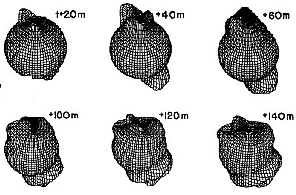
This figure shows the effect of the aurora on the atmosphere. When FAC's enter the atmosphere and create the aurora, they heat the atmosphere suddenly and abruptly. This creates an impulse which travels
...more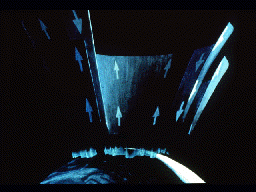
This picture shows the flowing of particles into and out of the auroral zone, as Field-Aligned currents (FAC's) take at short-cut through the atmosphere. Some of the particles entering the auroral zone
...more
This figure shows a series of images of the auroral oval as it expands over the course of about an hour in response to a geomagnetic storm. This is an animation of the auroral oval expanding.
...more


